Considering that Science is a stale read, I livened up my research by poring over pages of BASS forum datum, searching for “cable guy” wisdom on the use of scent on baits.
BASS fiends are more fun than fly fishermen, but only because they have so many more hang-ups (and such thin skins) …
Mention to a fly fisherman that he “coaches soccer,” and you get that screwed up face suggesting the joke was lost on him, whereas the bass crowd is already climbing over the bar intent on your arse …
In short, science suggests scent in fish is somewhat synonymous with taste, and it makes perfect sense. In humans scent is particulate matter mixed with air, and taste is particulate matter dissolved in spittle. Each sense being chemically discrete and can be experienced without the data intruding from one to the other.
Fish “smell” particles dissolved in water and their “taste” is the same medium, so the two senses have overlap.
The physics of water and scent is reasonably obvious. The rush of water downstream carries scent and forms a plume from the source of the dissolved solid. Lake water has much less of a current and therefore the scent area is a slowly widening circle from the source of the particulate.
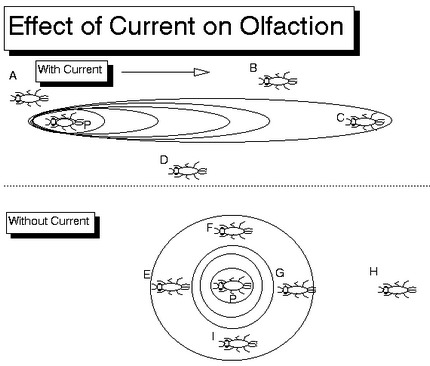
Naturally my slow moving ditch water has neither appreciable current nor is it completely stagnant, so the chemical trail of any bait tossed within its banks will be slow in spreading.
That’s the good news.
Science drops the bombshell by suggesting polluted waters affect smell drastically, and even fish exposed in migration can suffer many weeks of scent impairment. Among the most drastic pollutants are metals, heavy or otherwise.
The worst of the worst being copper, which should send a cold chill up any fisherman’s spine …
Copper is most frequently deployed as an algaecide or fungicide. Significant amounts of copper in the water column result from farm field runoff from crops that are water intensive like rice or tomatoes.
As we’re discussing those drainage ditches that bisect California’s Central Valley, we know that copper is deployed wherever there is rice fields, which comprises about half the state.
Naturally its the Northern half – which means all that copper is in the Sacramento, and pushed down to Southern California via the aqueduct, and spat into San Francisco Bay after permeating the Delta.
Copper is apparently linked to the decline of California’s Coho salmon population given its ability to destroy taste and smell in salmonids, making them unable to detect waterborne predators like Pike minnow, Otters, and everything else the southern water districts conjure up as a Jihadist of salmon.
So while you’re buying all that antimony because you can no longer bear to throw lead into the creek, consider your use of copper wire ribbing and how many fish are bumping into things because of your errant back casts and the rusting Copper John’s left in your wake.
Even worse is how Copper is being used to mitigate Didymo … and in so doing, will play havoc on everything downstream.
The Bass crowd are adamant on the merits of Anise, Garlic, Eau D’ Earthworm, Shrimp, Shad, Herring, and Crawfish. Naturally, they don’t spend a lot of time offering science to back up their assertion that Bass adore Garlic, but they can claim it makes their own hammy hands smell less like human.
… and fish hate human … along with tobacco, urine, bubblegum and a smoking fry pan …
In short, scent is among the senses used to detect prey, as bugs and minnows, crayfish and frogs, all have a chemical plume downstream of them, assisting a fish in opaque water to located them by following that plume upstream to its source.
Polluted water means fish can smell less, but as murk water is a fly fisherman’s Achilles Heel, cannot be ignored as a source of attraction.
Bass anglers mention that both aerosol and liquid scents seem to wash off faster than the “sticky jelly” variant, so it sounds like we’ll be getting our hands dirty …
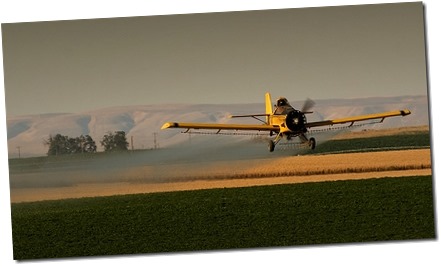

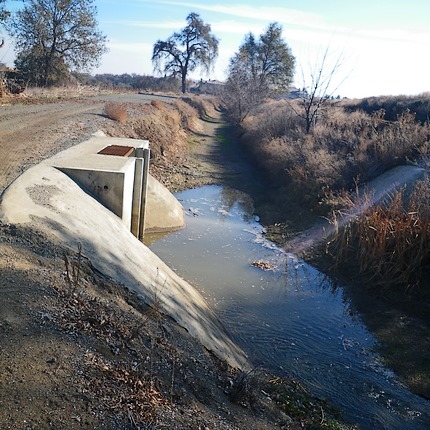
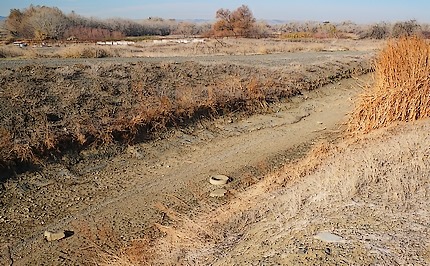
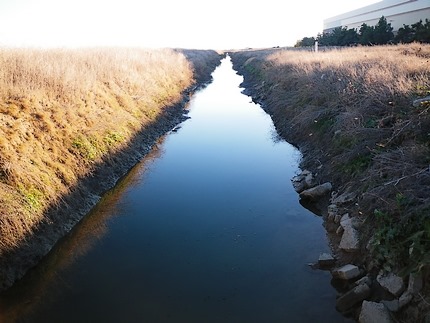

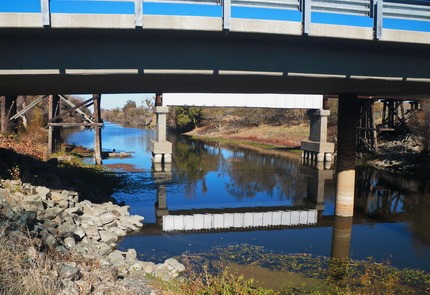
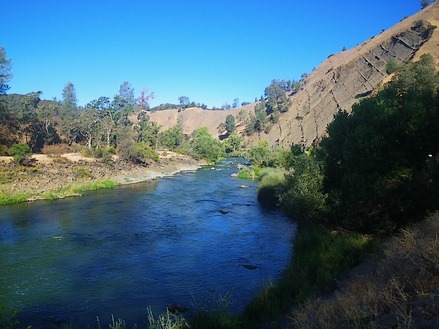
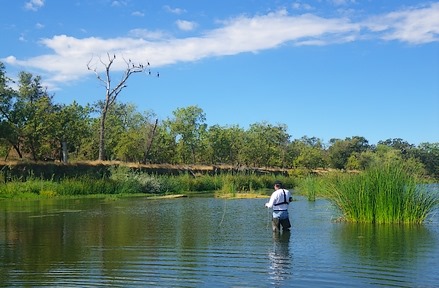
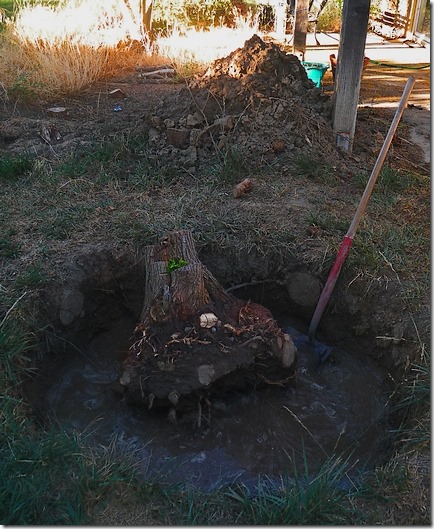
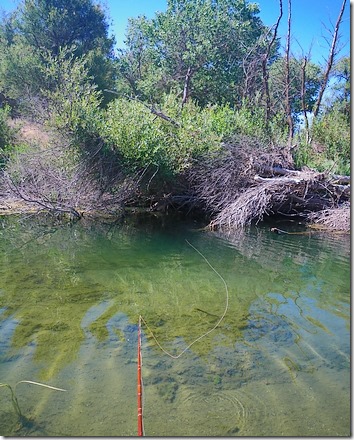
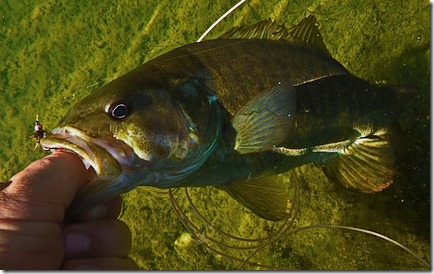
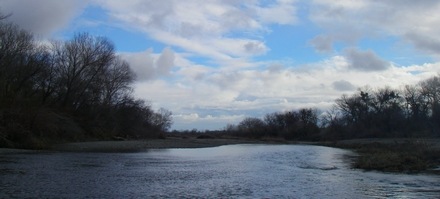

 For them as resolved to do more fishing in 2008, you were slow getting out of the sack and I beat you to it. You missed nothing, although it was reminiscent of a scene from “
For them as resolved to do more fishing in 2008, you were slow getting out of the sack and I beat you to it. You missed nothing, although it was reminiscent of a scene from “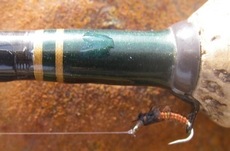 I had two dozen experimental flies to test on fish, mostly copper wire creations, as I had received 18000 feet of 36 gauge Ultrawire from an electronics supply house. I always liked the “Copper John” fly, and made up some caddis and mayfly imitations using mostly copper wire.
I had two dozen experimental flies to test on fish, mostly copper wire creations, as I had received 18000 feet of 36 gauge Ultrawire from an electronics supply house. I always liked the “Copper John” fly, and made up some caddis and mayfly imitations using mostly copper wire. I hadn’t been downstream in a couple months, and figured my battle with “
I hadn’t been downstream in a couple months, and figured my battle with “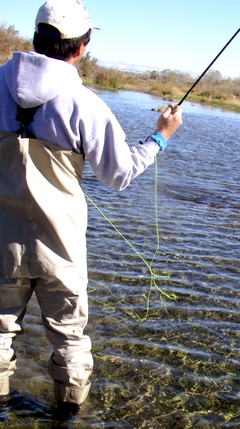 It’s over now, another Singlebarbed reader has got the “pooty” on him, and while the Brownline stain may come off his waders with a little soap, his soul is another story.
It’s over now, another Singlebarbed reader has got the “pooty” on him, and while the Brownline stain may come off his waders with a little soap, his soul is another story.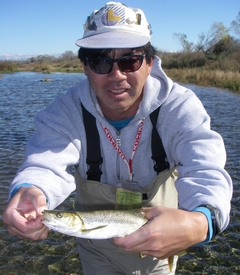
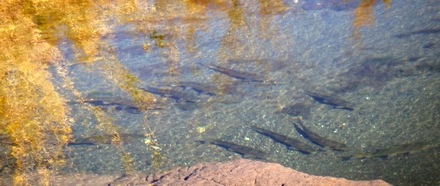
 were in the 16-18″ range. These fish are in 4 foot of water and would flee as soon as the fly impacted the surface. Kelvin and I wore them out as they ran from my fly – straight into his – and vice versa. If you can’t catch them, might as well drive them nuts…
were in the 16-18″ range. These fish are in 4 foot of water and would flee as soon as the fly impacted the surface. Kelvin and I wore them out as they ran from my fly – straight into his – and vice versa. If you can’t catch them, might as well drive them nuts…